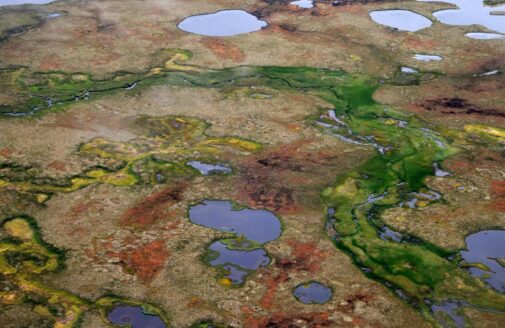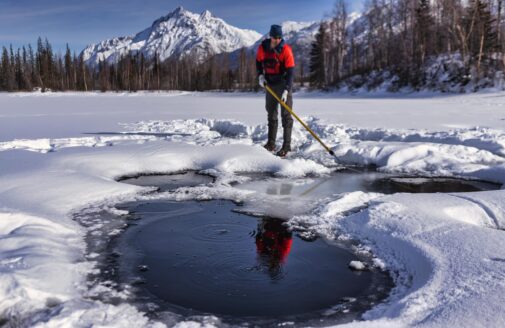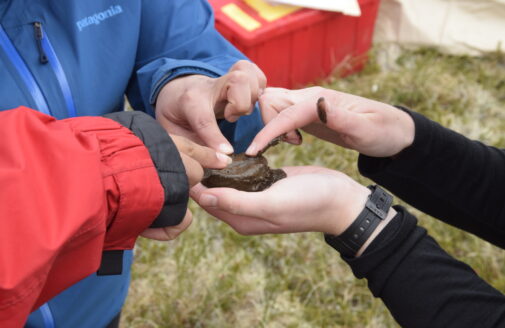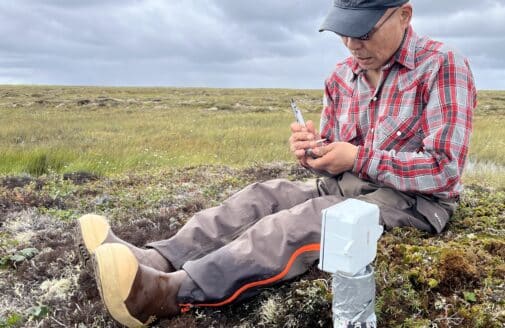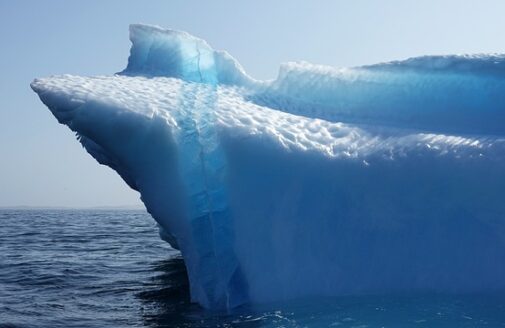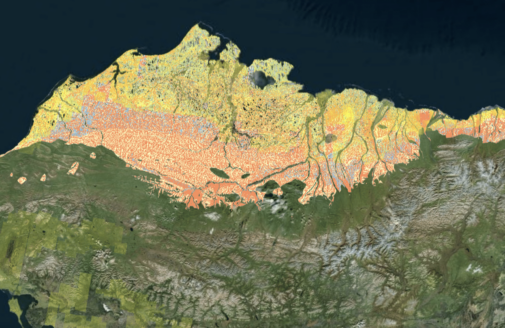Climate change is opening the drain on Arctic lakes
Thawing permafrost is creating a capillary system that empties Arctic lakes
Drained lake near Kotzebue, Alaska.
photo by Sebastian Zavoico, courtesy of Susan Tessier
June 29, 2022—When Susan Tessier and her husband, Tim, went out for the day, they had a lake on their Native allotment. When they came back, It was gone.
“My husband Tim and I left home in the morning and when we came back around 8:00 in the evening the whole lake had drained,” she writes in a post on the Local Environmental Observation Network site—a community science website where observers can report unusual changes in their local environment. “There was a hole that had blown out and it had drained into the ocean… It looked like it was blown up with dynamite.”
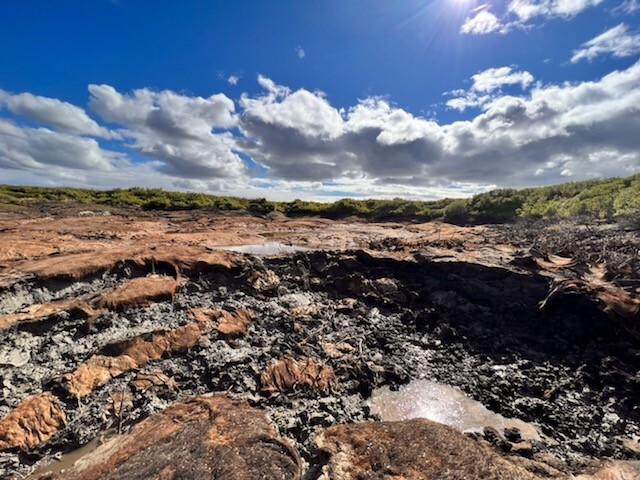
Drained lake on Susan Tessier’s Native land allotment.
photo by Susan Tessier
Water is the ecosystem engineer in the Arctic. The lowland tundra landscape is a network of lakes and streams, mosaicked across an expanse of frozen ground riddled with wedges of ice. The freezing, thawing, moving, eroding dynamics of these features shape the larger landscape, and determine the habitats of fish, birds, plants, mammals—and, of course people—living in the Arctic.
Abrupt lake drainage, like Tessier described, is just one way that changes in water and ice can influence the landscape, but a recent review paper conducted by University of Florida Postdoctoral Associate, Dr. Elizabeth Webb, and Woodwell Climate Associate Scientist, Dr. Anna Liljedahl, indicates events like this may become more common as the climate warms—overtaking lake expansion and slowly drying out the Arctic tundra.
Evidence of lake drainage across the literature
This new paper comes on the heels of a 2022 study that Drs. Webb and Liljedahl also authored, which came to the same conclusion: despite the processes of lake expansion and drainage continuing simultaneously across the Arctic, net lake area is trending downward. The Arctic is getting dryer.
The review complements the strengths of the previous study, compensating for some of the limitations of using geographically coarse remote sensing data. Synthesizing data from 139 sites across the Arctic, pulled from 57 different studies, Drs. Webb and Liljedahl were able to corroborate their own past findings.
“Lake size can vary from one season to the next in response to factors like precipitation or evaporation, so if you’re only looking at a limited set of remote sensing images, that can influence a trend analysis,” explains Dr. Webb. “It’s actually really exciting from a scientific rigor perspective to have two completely different remote sensing methods showing the same result.”
The review also adds weight to the idea that permafrost thaw is the primary driver in the loss of Arctic lakes. A large portion of Arctic soil is ice-rich, perennially frozen ground called permafrost, and as the climate heats up, it has begun to thaw and destabilize. That thawing can both create new ponds, and help drain them. The review indicates that decreases in size and number of Arctic lakes are more prevalent than expected, dominating the dynamic in some areas.
This contradicts another leading theory that changes in precipitation and evaporation rates—called the “water balance hypothesis”—are driving changes in lake area. Prior to Drs. Webb and Liljedahl’s investigations, the prevailing thought was that lake creation would outpace drainage rates, for at least the next several decades.
Climate change is opening drainage channels in the permafrost
It works like this: most Arctic lakes form when wedges of ice in permafrost melt, leaving behind a depression that fills with water. The water absorbs and holds more heat, slowly thawing and eroding surrounding permafrost, growing from puddle to pond to lake over the years.
Drainage can happen in one of two ways. The first is vertically, which occurs when the permafrost beneath the lake thaws down to the unfrozen ground beneath, allowing the water to seep out the bottom. This can take hundreds or thousands of years, depending on the depth of the permafrost.
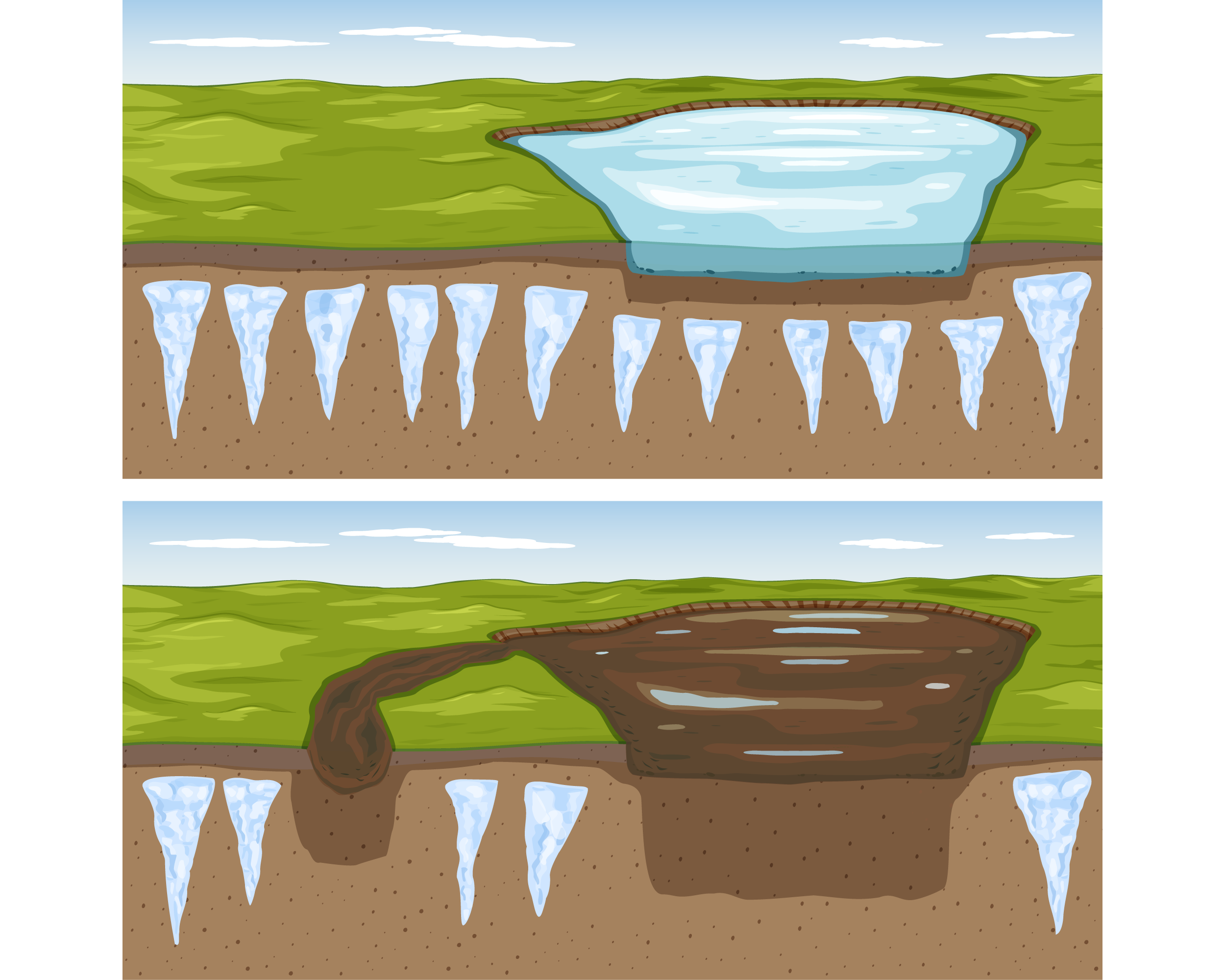
(top) Arctic lakes begin as a depression in the surrounding permafrost and drain (bottom) when ice wedges in the ground thaw, creating a capillary channel.
graphic by Julianne Waite
The second way is horizontally, through what Dr. Liljedahl calls “capillaries.” Ice wedges are common across the Arctic, connected by an underground network of ice that pushes the soil above them upwards as they grow, creating ridges that impede water flow. But when the tops of these wedges melt, the ridged ground above them subsides, forming narrow channels between lakes and ponds. When an expanding lake meets one of these capillary channels, the lake can drain in a matter of hours, as if the plug has been pulled on a bathtub drain.
“The formation of lateral drainage channels can interrupt this lake expansion process at any time, and I think that’s what’s making it override expansion and cause the net drying effect,” Dr. Liljedahl says. “The lake that took millenia to grow can be gone in a couple of hours.
Fewer Arctic lakes leave communities in the lurch
So what does an Arctic with fewer lakes mean? In terms of carbon, the picture isn’t clear. Since lake expansion—a common source of methane emissions—and lake drainage are happening concurrently, the net effect is not easy to discern.
“With lake drainage, it’s much less clear what the carbon consequences are. The current thinking is that lake expansion releases orders of magnitude more carbon than lake drainage, but because it’s complicated, we’re not quite sure,” says Dr. Webb. “It’s definitely an open research question.”
Dr. Liljedahl notes that there is also documentation of permafrost recovering and re-growing in drained lake beds. “Over decades, they could develop new ice-wedges and vegetation on the surface. Lake beds could experience net carbon accumulation for at least a couple of decades after drainage,” Dr. Liljedahl says.
However, the ecological consequences of fewer Arctic lakes are more certain. Fish and other aquatic species will have the size of their habitat reduced and their freedom of migration restricted, as lakes drain and connecting streams dry up. Species that feed on fish or rely on wetland vegetation, like muskrats, will also be impacted.
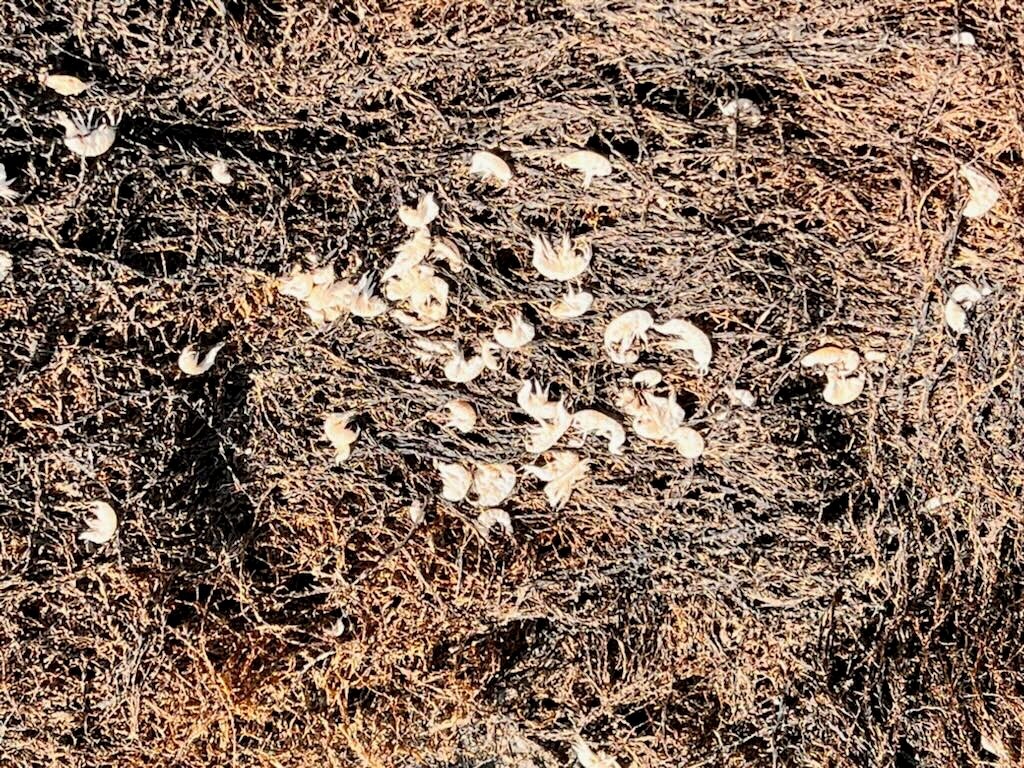
Freshwater shrimp that died during lake drainage event.
photo by Susan Tessier
Small lakes are an important source of freshwater for Arctic communities. Tessier wrote in her post about the lake drainage she witnessed, “We are sad to lose the lake because in winter, after it froze up, we used to go cut ice chunks for drinking water. It has really clear water. If we get enough snow we can use snow water instead, but it is not as good.”
As more lakes drain, clean freshwater could become harder to access. Combined with the destabilization of the ground itself as permafrost thaws, Arctic communities are facing massive changes.
Dr. Liljedahl hopes that refining our understanding of water dynamics in the Arctic will aid adaptation measures. She has been awarded a three-year NSF grant to continue studying the ice wedge capillary network and its role in the Arctic hydrological system. She’ll use remote sensing to quantify the distribution of the ice wedges contributing to increased drainage. She also plans to pull data from field measurements to figure out how permanent the capillaries are, since vegetation feedback loops could help permafrost recover and return the surface to its original elevation.
“We have more to do before we can feel like the models are representing a realistic scenario. We need to better understand what is happening at the sub-meter scale with water, because the presence or absence of surface water will have a major impact on how the landscape evolves,” Dr. Liljedahl says.




